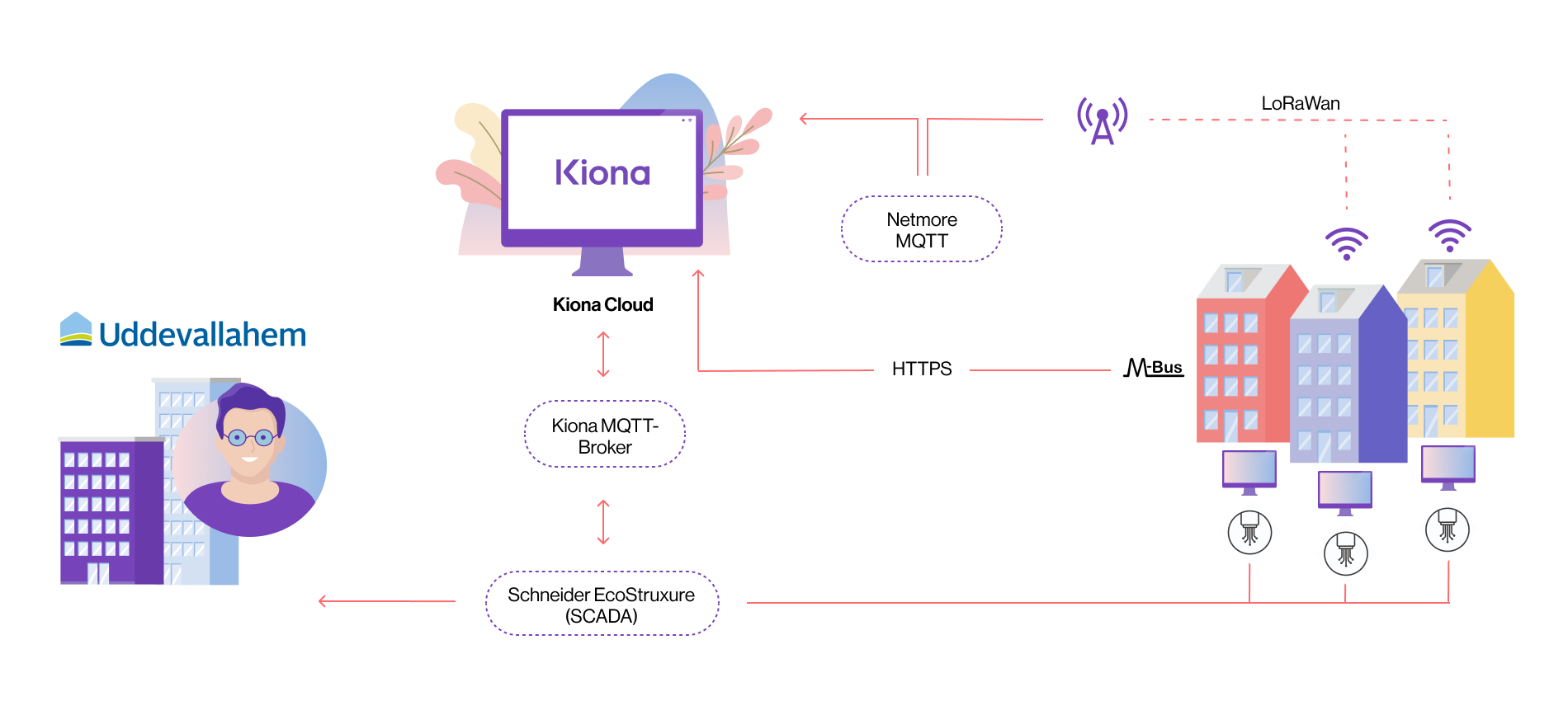As a "small" public housing company with around 4,700 apartments, it can feel difficult to dare to invest in AI and digital solutions. Andreas Skälegård is an energy strategist at Uddevallahem and a key person in the fact that the real estate company has nevertheless invested in energy efficiency with modern technology.
"In this context, Uddevallahem is a small property owner with little staff and no financial resources for development. We must rely on the commercial players' pre-developed services. For example, we can take advantage of Kiona's technology development, which has been going on for almost 20 years and whose development is passed on to all their customers, not just us," he says.
Much has happened in recent years regarding more standardized and accessible products, which has contributed to Uddevallahem now daring to build its own ecosystem of open platforms for building automation and energy management.
The pieces of the system
Uddevallahem has previously used Edge to control heating in their buildings with AI, so we were used to working together. The ecosystem they now have built consists of, in simple terms, a number of pieces of a puzzle. Key pieces are Schneider's SCADA platform EcoStruxure, which is connected to modern controllers/PLCs and temperature sensors in the apartments. Temperature is measured with either wired M-Bus or the wireless and unlicensed standard technology LoRaWan.
LoRaWan has the advantage of being a radio standard with very good coverage. Uddevalla has four antennas covering the urban area and receives measurement data, even from "windowless basement rooms, according to Andreas Skälegård.
Uddevallahem's system architecture includes Schneider EcoStruxure, a SCADA platform that Edge, in this case, integrates with via an MQTT Broker. EcoStruxure subscribes to all updates made in Kiona MQTT and continuously pushes out changes to each building's own DUC/PLC.
A common example could be that Kiona's AI has made a new calculation on the heat curve, which is published to the MQTT Broker. EcoStruxure subscribes to updates from there, detects new data for a specific property, and enables updates to the building's connected DUC.
All in all, the connection between the different pieces of the puzzle was smooth and easy.
MQTT Broker acts as a hub
Kiona MQTT Broker – This feature works like OneDrive for data, where different stakeholders, users, and suppliers with authorization can work in the same "document" simultaneously.
The structure is based on the Node-RED software, a flow-based, low-code development tool for visual programming to connect hardware devices, APIs, and online services. By creating JavaScript functions in a browser-based interface, a flow editor has been set up that can be likened to an Excel sheet with tabs for different types of data. For example, there is a tab for indoor climate and another tab for control.
The MQTT Broker controls what EcoStruxure (SCADA) should do in each building.
How the intelligence is used
Temperature readings from each apartment constantly flow in, and the data model automatically learns, via AI and Machine Learning, how the house feels and behaves and how thermally sluggish it is. It also takes in parameters such as date and time and local weather. Edge transmits the data via DUCs at the heating stations and pairs it with measured temperatures in the apartments. The data goes in both directions and teaches the system what temperature to send out.
Edge can take in many different measurements and knead out a setpoint that can be sent to each building. Kiona has been developing technology for so many years that traditional setpoint calculations don't stand a chance in energy efficiency compared to this.
He also believes that having the calculations, or algorithms for the setpoint calculations, in an external cloud, as Kiona does, has several advantages. He says that vendors who build their technology in this way can be very agile in developing the algorithms and can add more inputs from other data sources. They can also modify the algorithms so that different input parameters have more or less impact on the setpoints.
"Kiona develops the algorithms in its own IT environment. There is no need to transfer programs or updates to the customers, which always takes time before implementation, and time is money. All this makes the system development cost-effective and, not least, faster to implement in more buildings."
In addition to having the calculations "in the cloud," the service includes a visual block model of Uddevallahem's various buildings, which the system controls. The 3D models illustrate everything clearly and show each apartment temperature sensor as a small dot in different colors: blue, green, or red, depending on the measured value.
You can turn the model upside down and examine the indoor climate over time. This provides strong visual feedback that can translate the theoretical into the concrete.
The results
The project will be completed in early fall 2024 by connecting about half of Uddevallahem's buildings to the ecosystem, a process done at the push of a button.
"It will have a major impact on how we at Uddevallahem work with automation and efficiency in our buildings," says Andreas Skälegård.
This approach is based on code and does not require hardware installation as needed before. Code is much faster to implement for a heating center and then easily repeated for ten more buildings, rather than ordering electricians to install hardware with a low repetition rate. It also offers several advantages, such as implementing updates directly and automatically, including injecting AI algorithms for energy optimization. In addition, an ecosystem that is dynamic, flexible, and scalable has been created.

